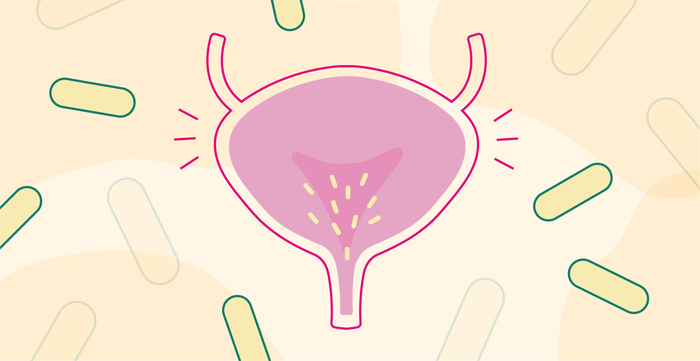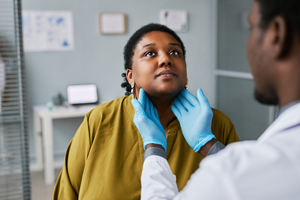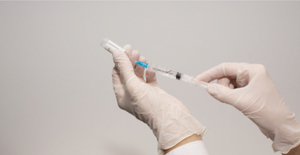Key points
- Urinary Tract Infections (UTIs) are the second most frequent bacterial infection, often affecting the urethra and bladder.
- UTIs are caused by an overabundance of harmful bacteria in the urinary tract, often entering from the genitals or anus.
- UTI symptoms include frequent urination, pain during urination, and bad-smelling or cloudy urine.
- UTIs are usually treated with antibiotics, and can be prevented by maintaining hygiene, staying hydrated, and urinating frequently.
- There are several misconceptions about UTIs, including that cranberry juice can help treat them and that they always go away on their own. While probiotics can support good bacteria in the body, they should be taken as part of an antibiotic regimen for an active UTI. Candida, a yeast infection, is different from a UTI and requires a different course of treatment.

They can burn, cause multiple trips to the bathroom, and even smell funky. According to the U.S. National Library of Medicine, urinary tract infections (UTIs) are the second most-frequent bacterial infection. As you may have guessed, UTIs are infections that occur in your urinary system, which includes the bladder, urethra, kidneys, and uterus. However, UTIs most commonly impact the urethra and bladder.
Given that, according to the U.S. National Library of Medicine, UTIs often bring a constant need to pee and stinging sensation during urination, it’s no wonder that many head to an urgent care center to seek relief.
To help you learn more about UTIs, we’ve broken down everything you need to know, from symptoms to keep an eye out for to what to expect in terms of treatment.
What causes UTIs?
The Mayo Clinic notes that UTIs are a type of infection caused by an overabundance of not-so-healthy bacteria in the urinary tract and bladder. The bacteria usually enters these regions from the genitals or anus.
The Mayo Clinic describes how this works: “Urinary tract infections typically occur when bacteria enter the urinary tract through the urethra and begin to multiply in the bladder. Although the urinary system is designed to keep out such microscopic invaders, these defenses sometimes fail. When that happens, bacteria may take hold and grow into a full-blown infection in the urinary tract.”
How do you get a UTI?
Although men can experience UTIs, women get them more often, according to data from the Mayo Clinic. This is likely because of the female anatomy: a woman’s urethra is shorter in length and is closer to the anus, which gives the “bad” bacteria an easy, quick route to the bladder, notes the Mayo Clinic.
You can get UTIs from sex, though this isn’t the only way to get a urinary infection, reports the Mayo Clinic. Sexual activity can introduce bacteria from the genitals and anus into a woman’s urinary tract, putting her at a risk for a UTI each time she has intercourse. The bacteria can also linger on fingers or sex toys inserted into the vagina or anus. It’s important to note that UTIs don’t spread like a sexually transmitted infection (STI), but having sex can cause or worsen UTI symptoms. Speaking of sex, women using contraception methods like diaphragms and spermicides may be at a higher chance of contracting a UTI, according to the Mayo Clinic.
Lastly, when a woman’s estrogen levels decline during menopause, this causes changes in the environment of the urinary tract. This shift increases the likelihood of infection, which puts menopausal women at greater risk for UTIs, according to the Mayo Clinic.
Symptoms: How do you know if you have a UTI?
UTI symptoms are unpleasant, but knowing what to expect can help you feel more calm and in control.
Here are a list of symptoms to watch out for according to the Mayo Clinic:
- Frequent or urgent need to pee
- Pain or burning when you urinate
- Bad-smelling or cloudy urine
- Blood or pus in your urine
- Soreness, pressure, or cramps in your lower belly, back, or sides
Note: Itching is not a symptom of a UTI. If you experience vaginal itch along with UTI, you may have a vaginal infection (like a yeast infection). Please see a qualified medical professional to make sure. Solv can help you find same-day appointments with a provider near you.
If left untreated, it’s possible for a UTI to spread to the kidneys and become a much more serious infection, notes the Mayo Clinic. If this happens, they note that you may experience the following physical signs:
- Pain in your mid-back (to the right of left of the spine)
- Fever
- Chills
- Nausea
- Vomiting
- Fatigue
How to treat a UTI?
A UTI can be easy to self-diagnose, but only a clinician can truly confirm an infection. To start feeling better, consider a visit to your doctor or an urgent care center for an official diagnosis.
Getting your symptoms checked out is especially critical if you notice symptoms indicating the infection has spread to the kidneys. Kidney infections need to be treated immediately.
After discussing your symptoms and medical history, a professional will usually administer a test called a “urinalysis,” which requires you to pee in a cup. From there, they will test to see if any UTI-causing bacteria is present in the urine. Though a urinalysis is the most common UTI diagnosis method, ultrasounds, urinary tract images, and cystoscopies may be used to look further for complications associated with UTIs.
Since UTIs are a type of bacterial infection, they usually require an antibiotic prescription, reports the Mayo Clinic. This type of medication can only be prescribed by a doctor (another reason to make that appointment). It’s important to follow the instructions given by the doctor or nurse regarding the medication.
According to Rob Rohatsch, MD, ““Antibiotics are usually quick and effective in treating UTIs, most symptoms disappear within one or two days of taking the antibiotics. However, it is important to finish the course of antibiotics prescribed and not stop when symptoms go away. The bacteria may still be lurking around and your symptoms may also reappear”. Depending on your symptoms, a doctor may prescribe a medicine that soothes the lining of the bladder and takes away many of the uncomfortable symptoms while the antibiotics kick in. Apart from taking your meds as prescribed:
- Drink plenty of water
- Avoid coffee or alcohol (substances that irritate the bladder and encourage frequent urination)
- Use a heating pad
How to Prevent a UTI
Since UTIs are caused by unhealthy bacteria entering the urethra, the best way to prevent UTIs is to stop it from entering the urethra, reports the Mayo Clinic.
Here’s how you can reduce your chances of getting an UTI according to the Mayo Clinic:
- After you go to the bathroom, wipe from front to back. Wiping the other way around can drag bacteria from the anus to the urethra.
- Stay hydrated: drink at least 6-8 glasses of water a day.
- Don’t hold your pee for too long. Try and urinate frequently (not more than 3-4 hours). This helps flush the bacteria out of your bladder. If you’re pregnant, you are at a higher risk of developing a UTI, especially if you do not urinate frequently.
- Urinate immediately before and after sex to help flush out bacteria that may have been introduced during intercourse.
- Do not use douches, deodorants, powders, oils, and similar items in your vagina. These feminine products can disrupt the balance of good bacteria, which may lead to a UTI or yeast infection.
- Do not leave tampons and pads in for too long. Change them frequently.
- Check with your doctor if you think your diaphragm or spermicides are causing infection.
- Take showers instead of baths.
- Avoid tight-fitting clothing and pantyhose.
Though UTI symptoms can be painful, don’t forget that they are very common and also treatable. Make an appointment with an urgent care center or visit your doctor to ensure you’re on your way to feeling better (and not yelping or cringing when you pee). You can book an appointment online and skip the wait with Solv.
UTI Myths and Facts
Myth: Drinking cranberry juice can help with UTIs
Fact: You may have heard that cranberry juice helps with UTIs. While drinking it isn’t harmful (unless you’re on blood-thinning medication or it causes an upset stomach or diarrhea), The Mayo Clinic reports that medical research on this alternative treatment is inconclusive.
Myth: A UTI always goes away on its own
Fact: Rarely, UTIs can go away without treatment with antibiotics. However, Dr. Rohatsch advises getting checked by a healthcare professional. He states, “Not all infections are mild. Sometimes, if left untreated, a UTI infection can spread to the kidneys and become a serious infection.” He adds, “You are at greater risk of a more severe infection if you are an older adult, pregnant, or get UTIs frequently. In these cases, it is even more important to talk to a healthcare provider.”
Myth: Probiotics cure UTIs
Fact: The short answer is yes and no. Yes, according to the Mayo Clinic, probiotics help develop colonies of good bacteria in our body. However, if you have an active UTI infection, probiotic supplements may be prescribed as part of an antibiotic regimen. There are various types of probiotics and it’s usually best to talk to a qualified professional about your specific condition before you begin taking probiotic supplements.
You may choose to consume natural probiotics like yogurt, kefir (fermented milk), kimchi, sauerkraut, or kombucha (fermented tea) regularly for good health.
Myth: Candida is the same as a UTI
Fact: Candida is a yeast infection while UTIs are caused by a bacteria, reports the Mayo Clinic. Although they may seem the same, they have different symptoms and courses of treatment. A Candida infection (Candidiasis) affects your vagina and vulva while a UTI infects your urethra and bladder. A UTI affects how you pee while a candida infection causes a burning sensation, itching and even swelling of the vagina and vulva. According to the Mayo Clinic, a tell-tale sign of candidiasis is a thick, white discharge that looks like cottage cheese with a strong smell.
It is possible to have both a UTI and a Candida infection at the same time. The best way to get the right care and relief from your symptoms is to talk to a medical professional.
The views expressed by authors and contributors of such content are not endorsed or approved by Solv Health and are intended for informational purposes only. The content is reviewed by Solv Health only to confirm educational value and reader interest. You are encouraged to discuss any questions that you may have about your health with your healthcare provider.
Source list:
FAQs
What causes a urinary tract infection?
UTIs are caused by an excess of harmful bacteria in the urinary tract, often entering from the genitals or anus.
What are the symptoms of a UTI?
Symptoms include frequent urination, pain during urination, bad-smelling or cloudy urine, and lower abdominal discomfort.
How are UTIs treated?
UTIs are typically treated with antibiotics prescribed by a healthcare professional. It's also important to drink plenty of water and avoid substances that irritate the bladder.
Can UTIs be prevented?
Yes, prevention methods include maintaining hygiene, staying hydrated, urinating frequently, and avoiding irritants like douches and deodorants in the vagina.
Are UTIs more common in women than men?
Yes, women are more prone to UTIs due to their shorter urethra and its proximity to the anus, which facilitates the transfer of bacteria.
How is a UTI treated?
UTIs are usually treated with an antibiotic prescription, as they are a type of bacterial infection. It’s important to follow the instructions given by the doctor or nurse regarding the medication. Drinking plenty of water, avoiding irritants like coffee or alcohol, and using a heating pad can also help alleviate symptoms.
Can UTIs be prevented?
Yes, UTIs can be prevented by practicing good hygiene, staying hydrated, urinating frequently, and avoiding irritants in the genital area.
Are there any myths about UTIs?
Yes, some common myths about UTIs include that drinking cranberry juice can help with UTIs, that UTIs always go away on their own, and that probiotics can cure UTIs. While these methods may help in some cases, it is always best to consult with a healthcare professional for accurate information and treatment.









